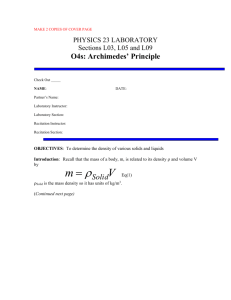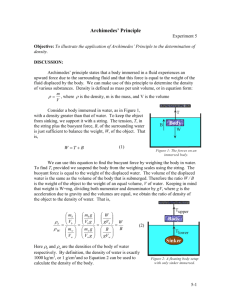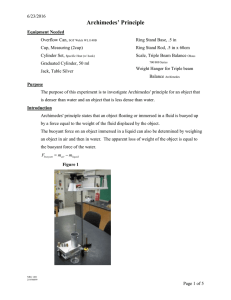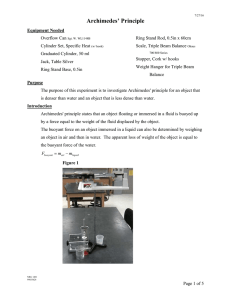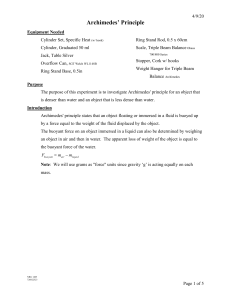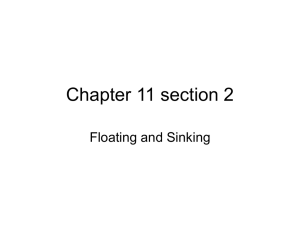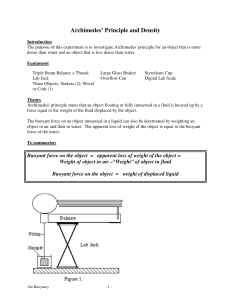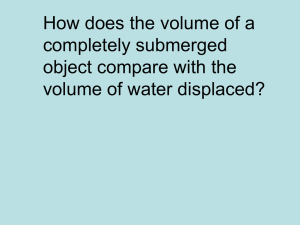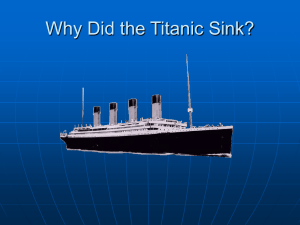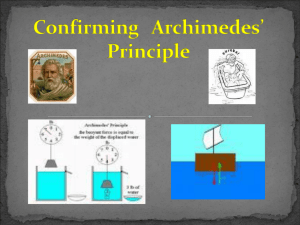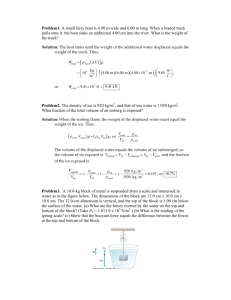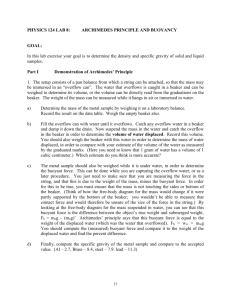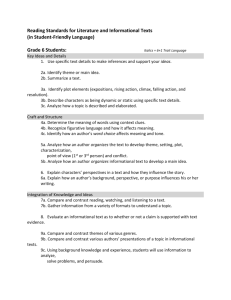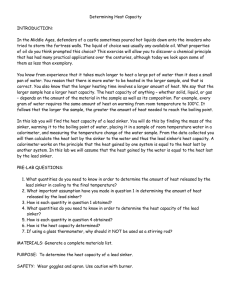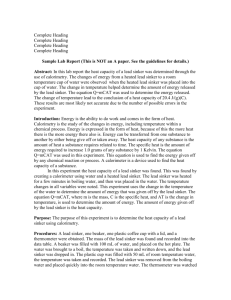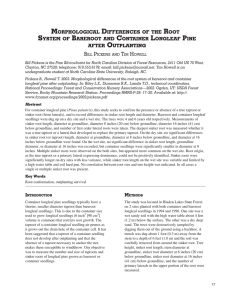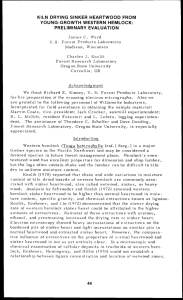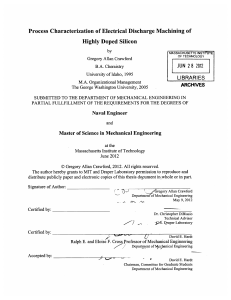Cookies principal states that a body interest can a fluid experiences
advertisement
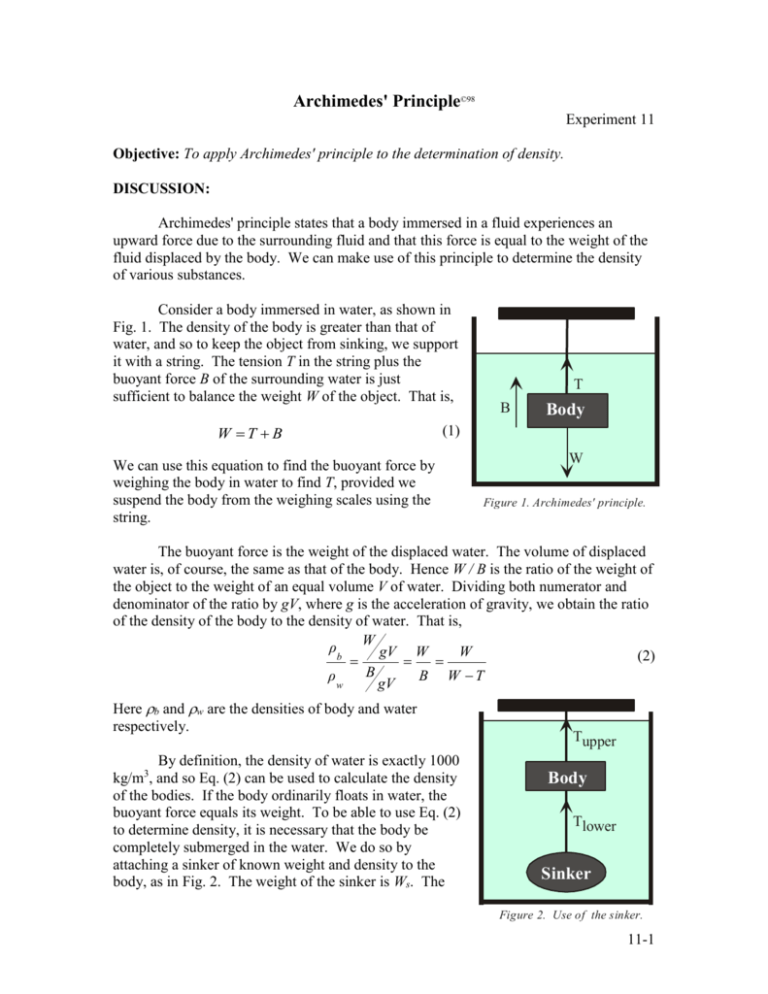
Archimedes' Principle©98 Experiment 11 Objective: To apply Archimedes' principle to the determination of density. DISCUSSION: Archimedes' principle states that a body immersed in a fluid experiences an upward force due to the surrounding fluid and that this force is equal to the weight of the fluid displaced by the body. We can make use of this principle to determine the density of various substances. Consider a body immersed in water, as shown in Fig. 1. The density of the body is greater than that of water, and so to keep the object from sinking, we support it with a string. The tension T in the string plus the buoyant force B of the surrounding water is just sufficient to balance the weight W of the object. That is, W T B T B Body (1) We can use this equation to find the buoyant force by weighing the body in water to find T, provided we suspend the body from the weighing scales using the string. W Figure 1. Archimedes' principle. The buoyant force is the weight of the displaced water. The volume of displaced water is, of course, the same as that of the body. Hence W / B is the ratio of the weight of the object to the weight of an equal volume V of water. Dividing both numerator and denominator of the ratio by gV, where g is the acceleration of gravity, we obtain the ratio of the density of the body to the density of water. That is, W ρ W gV W b (2) B ρ B W T w gV Here b and w are the densities of body and water respectively. By definition, the density of water is exactly 1000 kg/m , and so Eq. (2) can be used to calculate the density of the bodies. If the body ordinarily floats in water, the buoyant force equals its weight. To be able to use Eq. (2) to determine density, it is necessary that the body be completely submerged in the water. We do so by attaching a sinker of known weight and density to the body, as in Fig. 2. The weight of the sinker is Ws. The 3 Tupper Body Tlower Sinker Figure 2. Use of the sinker. 11-1 buoyant forces on the body and sinker are Bb and Bs respectively. The combined weight W and the combined buoyant forces B are thus given by (3) W W W b s and BB B b (4) s Equation 1 continues to give the relationship between W, B, and the tension T. The buoyant force on the sinker is the weight of water displaced by the sinker. This is the product of the volume Vs of the sinker, and its density s, and the acceleration of gravity g. Thus we write: V s and W s s g Bs w gV s , . (5) (6) These equations can be combined to give the buoyant force Bb on the body. Then Eq. (2) can be used for the body alone to find the density of the body. This method can also be used to find the density of a liquid, say a solution of copper sulfate, by weighing a body of known weight W and density b in the liquid. In this case, Eq. 2 becomes B ρ ρ (7) l b W where l is the density of the liquid and B is the buoyant force on the body immersed in the liquid. (Care must be taken in this measurement that the body not react chemically with, nor dissolve in, the liquid.) EXERCISES: 1. Determine the density of several sinkable objects. a. With string suspend and weigh in water the various denser-than-water specimens whose weights in air have been measured. b. Using Archimedes' principle, calculate the density of each specimen. c. Determine the percent deviation your calculated densities make with the accepted densities of the specimens. 2. Determine the density of several floatable objects. a. Suspend and weigh in water the less-dense-than-water specimen. b. Calculate the density of the specimen. c. Determine the percent deviation your calculated density makes with the accepted density of the specimen. 11-2 3. Determine the density of an unknown solution. a. Using a body whose weight and density are known, measure the tension in the string when this body is suspended in a liquid whose density is to be determined. b. Calculate the density of the liquid. 11-3
